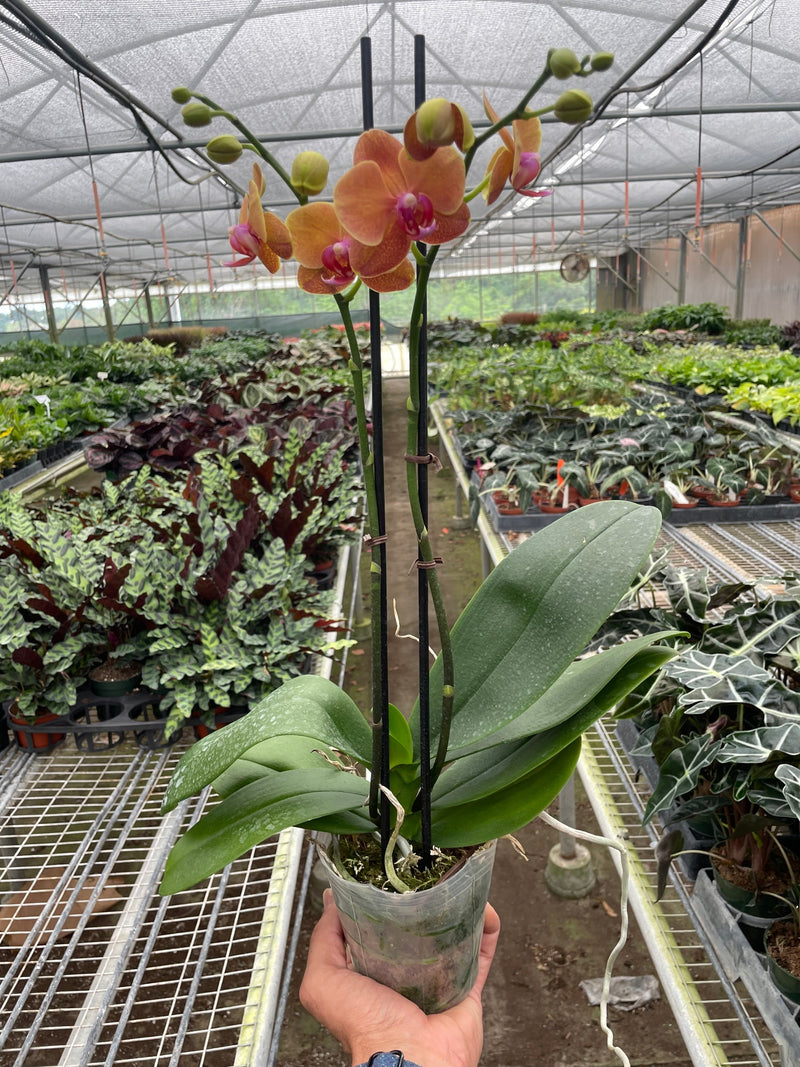Orchid 'Orange Phalaenopsis'
Couldn't load pickup availability
The Orange Phalaenopsis Orchid, known for its vibrant and warm-colored blooms, is a stunning variety of the popular Phalaenopsis genus. Like its counterparts, it offers long-lasting flowers and is relatively easy to care for, making it a favorite among orchid enthusiasts and a cheerful addition to any indoor setting. The care for an Orange Phalaenopsis Orchid closely mirrors that of other Phalaenopsis orchids, focusing on the right balance of light, water, and humidity to thrive.
🌿 Botanical Name: Phalaenopsis spp.
💧 Care Level: Moderate. Phalaenopsis Orchids are generally easy to care for once their basic needs are met, making them a great choice for beginners to more experienced gardeners.
📏 Size: Typically reaches 12-24 inches (30-60 cm) in height, with bloom spikes that can extend above the foliage. Flowers range from 2-5 inches (5-12 cm) in diameter and appear on arching stems.
☀️ Light: Prefers bright, indirect sunlight. Direct sun can damage the leaves, while insufficient light may hinder blooming. An east or west-facing window covered by sheer curtains is often ideal.
💧 Water: Water approximately once a week, allowing the top inch of the potting medium to dry out between waterings. Ensure proper drainage to avoid root rot, as Phalaenopsis Orchids do not like to be waterlogged.
💦 Humidity: Thrives in humidity levels of 60-80%. To increase humidity, place the orchid on a tray of pebbles partially filled with water, ensuring the pot does not sit directly in the water, or use a room humidifier.
🌡️ Temperature: Prefers average indoor temperatures, ideally between 65-80°F (18-27°C) during the day and 60-70°F (15-21°C) at night. Protect the orchid from drafts and drastic temperature changes.
🌱 Soil: Orchids require a special potting mix, often composed of bark, sphagnum moss, and perlite, which provides the necessary drainage and air circulation to the roots.
🌱 Fertilizing: Use a balanced, water-soluble orchid fertilizer diluted to half strength every 1-2 weeks during the growing season (spring and summer). Reduce frequency in fall and winter.
🔄 Pruning: After the flowers fall, encourage a second bloom by cutting the spike above the second or third node from the bottom. If the spike dries out or turns brown, cut it at the base.
🍃 Pests and Diseases: Keep an eye out for aphids, mealybugs, and spider mites. Overwatering can lead to root rot, so it's crucial to maintain proper watering practices and ensure good drainage.
Propagation: While Phalaenopsis Orchids are not typically propagated by home gardeners, they can produce keikis (baby plants) on the flower spike, which can be potted independently once they have developed several roots and leaves.


Orchid 'Orange Phalaenopsis'

